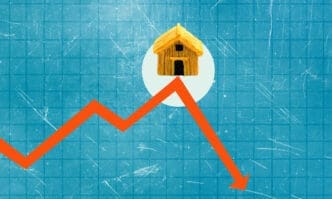Executive Summary
The Trajectory So Far
Assessing Risk and Value
Expert Predictions and Forecasts
The U.S. housing market is experiencing a historic slowdown, now stretching into its fourth year, characterized by the lowest home turnover rate in at least three decades. Persistent affordability challenges, elevated mortgage rates, and economic uncertainties continue to foster caution among both buyers and sellers, according to recent industry analyses.
Market Turnover Hits Decades-Low
Redfin’s research, published by head of economics Chen Zhao, indicates that only 2.77% of U.S. homes, approximately 28 out of every 1,000, changed hands through the first three quarters of 2025. This figure represents the lowest home turnover rate observed in at least three decades, tracking slightly below 2024’s 2.78% mark.
Zhao noted that buyers are frequently withdrawing from deals due to affordability or reevaluating their commitment. On the other side, many sellers are hesitant to move, either “locked into low rates” or unwilling to accept offers below their expectations.
Sales Pace and Financial Burdens
The slow turnover rate aligns with home sales in 2025 tracking three-decade lows, with existing homes sold at an annualized pace of 4.06 million units in September, matching last year’s full-year results, as reported by the National Association of Realtors.
Since early 2020, the average principal payment on a mortgaged single-family home has increased by 23%, according to ICE Mortgage Technology. During the same period, interest costs rose 27%, property insurance soared 70%, and property taxes increased 27%.
Homeownership Tenure Lengthens
Further underscoring the market’s stagnation, the real estate analytics firm Attom reported that U.S. homeowners are staying in their homes longer than at any point in the past quarter century. The average homeownership tenure reached 8.39 years for third-quarter sales in 2025, an increase from 8.13 years in the second quarter. This figure is significantly higher than the roughly four years observed in the third quarter of 2004.
Affordability Gap Persists Despite Rate Trends
Despite some cooling in home prices and a trend of lower mortgage rates over 2025, significant affordability hurdles persist for new homebuyers. While typical homeowners with a mortgage currently enjoy an average rate of 4.3% on a $1,953 monthly payment, according to the Federal Housing Finance Agency, the median monthly payment applied for by new homebuyers in September was $2,067, as per Mortgage Bankers Association (MBA) data.
Market Outlook
Looking ahead, the MBA forecasts that average 30-year mortgage rates will conclude 2026 at 6.3%, consistent with current levels. Fannie Mae’s most recent economic and housing outlook predicts year-end 2025 rates at 6.3%, potentially dropping to 5.9% by the end of 2026.
Edward Seiler, associate vice president of housing economics for the MBA, expressed optimism for “slightly stronger housing demand heading into 2026,” assuming rates stabilize and home prices remain flat.
Key Takeaways
The U.S. housing market continues to grapple with a prolonged slowdown driven by affordability issues and homeowner reluctance to move. While some market adjustments, such as increased inventory and stabilized rates, offer minor relief, the deep-seated challenges of high costs and cautious sentiment are expected to persist, signaling a gradual and measured recovery rather than a swift rebound.








